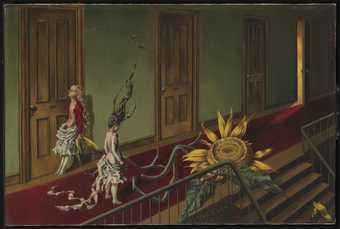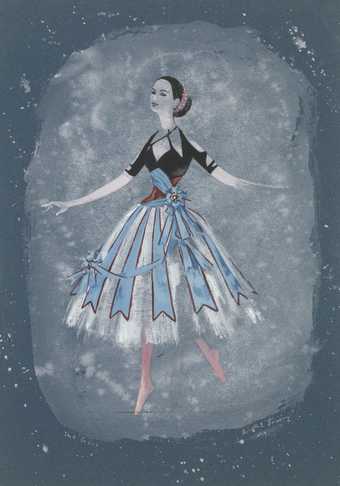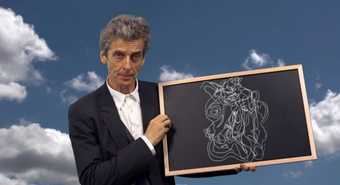Want to learn more?
Here are 10 things to know about Dorothea Tanning ...
1. She lived for over 100 years
Dorothea Tanning was born in 1910 in the small town of Galesburg, Illinois in the United States. She died in 2012 in New York, aged 101. Amazingly, she continued to create art and poetry until the end of her life.
Living is so amusing.
Dorothea Tanning

Dorothea Tanning
Eine Kleine Nachtmusik (1943)
Tate
2. She quit art school
Tanning knew that she wanted to be an artist from a young age. She briefly attended classes at The Chicago Academy of Art but rebelled against the formal art education. Instead she spent her time amongst the paintings in The Chicago Art Institute. Hoping to pursue a career as an artist, Tanning moved to New York where she worked as a freelance illustrator.
I thought you had to go to art school. It would be a kind of initiation like being baptised — in paint. […] What a scam! They would take your money for your 'tuition', and then you sat and drew in a stuffy little room. [...] I threw down my charcoal and left, and that was the end of my art-school training.
Dorothea Tanning
3. She was a surrealist
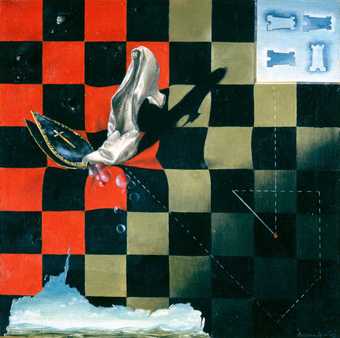
Dorothea Tanning Endgame 1944 Harold (†) and Gertrud Parker Collection © DACS, London
Surrealism, which emerged in Paris in the 1920s, explored the hidden workings of the mind. In 1936, Tanning visited the exhibition Fantastic Art, Dada, Surrealism at the Museum of Modern Art in New York. This was her first experience of surrealism. She described the experience as ‘momentous’, saying: ‘I thought, Gosh! I can go ahead and do what I've always been doing'.
In 1939, she sailed to Paris, hoping to meet surrealists there. However, Tanning was forced to return to New York because of the outbreak of the Second World War. The war brought many European surrealists writers and artists to the city as cultural refugees.
4. Her approach to art changed throughout her career
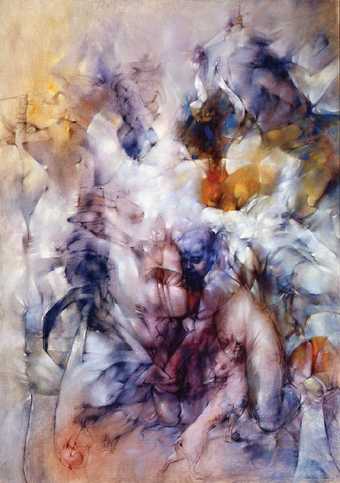
Dorothea Tanning Insomnies (Insomnias) 1957 Moderna Museet (Stockholm, Sweden) Purchase 2006 funded by The Barbro Osher Pro Suecia Foundation (The Second Museum of Our Wishes) © DACS, London
During her lifetime, Tanning worked as illustrator, painter, print maker, sculptor and set and costume designer. She created a variety of art, from her fantastical scenes of the 1940s, to her more abstracted paintings of the mid-1950s.
Artists can change and move on [...] that's much more interesting than being like Chagall, who painted the same damn thing all his life. Don't you think?
Dorothea Tanning
5. She made radical sculptures
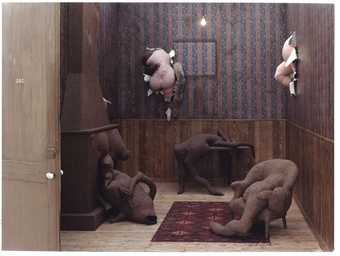
Dorothea Tanning Hôtel du Pavot, Chambre 202 1970–3, Centre Pompidou, Paris. Musée national d´art moderne / Centre de création industrielle. Purchased in 1977 © DACS, London
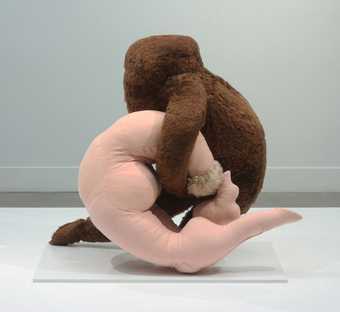
Dorothea Tanning Étreinte [Embrace] 1969, Museo Nacional Centro de Arte Reina Sofía, Madrid © DACS, London
During the late 1960s Tanning started to make sculptures out of fabric. These are known as soft sculptures. Tanning gathered the fabric for these works from charity shops and stuffed them with wool. Sewn on her Singer sewing machine, they appear as bizarre, body-like shapes. In the artwork Hôtel du Pavot, Chambre 202 1970–73, Tanning brought several of these eerie, human forms together into an unsettling sculptural installation. Bodies break through the wallpaper and merge into furniture.
6. Her life and her art merged
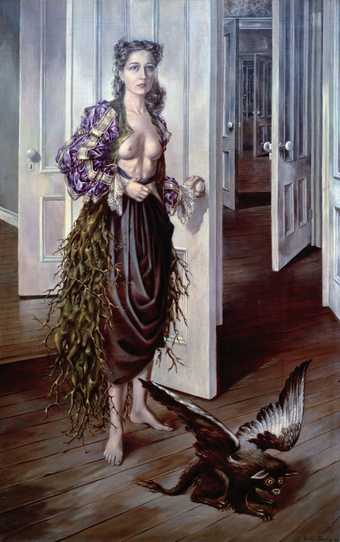
Dorothea Tanning Birthday 1942 Philadephia Museum of Art. 125th Anniversary Acquisition.
Purchased with funds contributed by C. K. Williams, II, 1999 © DACS, London
In 1942, artist Max Ernst was introduced to Tanning through the gallerist Julien Levy. Ernst was helping his then-wife Peggy Guggenheim on a major exhibition of women artists she was planning. He saw Tanning’s self-portrait Birthday 1942 on her easel in her apartment and suggested its title to mark her ‘birth’ as a surrealist artist. The painting was selected for the exhibition and within a week Ernst had moved into Tanning’s apartment. In 1946, they were married in a double ceremony with the artist, Man Ray and dancer, Juliet Browner.
7. She rejected being labelled a ‘woman artist’
Tanning was a strong believer in equality. Similarly, she didn’t want to be defined by her relationship with artist Max Ernst, stating ‘I never heard him use the word “wife” in regard to me. He was very sorry about that wife thing.’
Women artists. There is no such thing – or person. It’s just as much a contradiction in terms as ‘man artist’ or ‘elephant artist’.
Dorothea Tanning
8. She was a writer
In her later years Tanning became an accomplished writer, publishing two collections of poetry, two memoirs and a novel. Her final collection of poetry, Coming to That, was published at the age of 101.
9. She lived and worked in different places
After leaving Galesburg in pursuit of a career as an artist, Tanning lived in Chicago and New York, later making trips to New Orleans, San Francisco and Sweden for exhibitions and to visit family.
By the mid-1940s, Tanning and Max Ernst moved to Sedona, Arizona where they built a house and spent much of the next decade. Surrounded by lizards, scorpions and snakes, Tanning described Arizona as a ‘landscape of wild fantasy’. They were visited by many other creatives here including poet Dylan Thomas, artist Marcel Duchamp and photographer Henri Cartier-Bresson.
In 1957, Tanning and Ernst moved permanently to the south of France. They stayed there until his death in 1976.
10. Dogs appear in many of her paintings

Dorothea Tanning Maternity 1946-1947 Private Collection © DACS, London
The image of the dog – often based on Max Ernst’s pet, a Lhasa Apso named Katchina – reappears in Tanning’s work. Sometimes she used the image of the dog playfully to represent herself.

